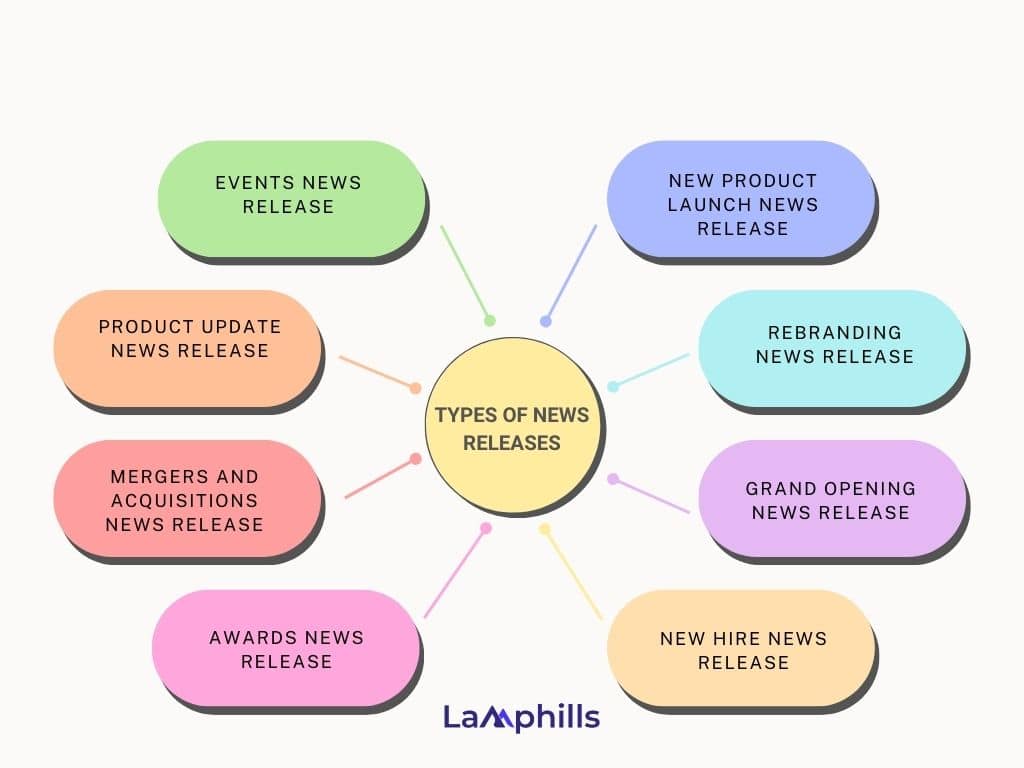How important do you think news release templates are? I mean, you’re running a business, not a news agency, right? So, why should you concern yourself with journalistic obligations?
Well, I can tell you that they are very important. After all, you work with people – customers, clients, stakeholders, etc – which means you need to communicate with them, either for quality-assurance purposes or in the event of a crisis.
Proper news release templates do wonders for your communication efforts. They help you control the narrative surrounding your brand, giving you structure and allowing you to get your information across in the clearest way possible.
Now, I’ve never been a business owner – the level of risk-taking just scares me a little too much. However, as a PR consultant, I work with brands for the communications aspect, and I will share with you a few tips. These will include how to craft news releases, as well as the templates I use for proper structure and cohesion.
Key Points
- A news release is an official statement (written or recorded) that an organization issues to the news media and beyond.
- News releases are a crucial aspect of PR strategies.
- A steady flow of information from your company (especially positive news) helps you stay relevant and attract potential customers.
- The goals are to attract media attention, raise public interest, and sell as many tickets as possible.
- Proper news release templates help you control your brand’s narrative, giving you structure and allowing you to communicate clearly.
What Is A News Release?
A press release is an official statement (written or recorded) that an organization issues to the news media and beyond. Whether we call it a “press release,” a “press statement,” a “news release,” or a “media release,” we’re always talking about the same basic thing.
Most press releases are succinct at just a page long – two pages tops. Ultimately, companies want to provide enough information so that news outlets have sufficient material for publishing their own stories about whatever the company is announcing in the release.
While the heading should contain action verbs, the first paragraph should answer the “who,” “what,” “why,” and “where.” The press release should also contain understandable language and a quote.
Press releases are a crucial aspect of a public relations strategy. A steady flow of information from your company (especially positive news) helps you stay relevant and attract potential customers. Your press release must be concise and stick to the facts. While the tone is formal, you can use images, statistics, numbers, and quotes to keep readers engaged.
Types of News Releases
As mentioned earlier, I have worked with brands as a PR consultant, which involves interacting with stakeholders on behalf of the brand. This involves crafting news releases of various kinds, and below are the most common types, along with my favorite templates to use:

#1. Events News Release
A press release is a vital part of your event marketing strategy. The goals are to attract media attention, raise public interest, and sell as many tickets as possible.
Your event press release should include:
- The time and location
- Pricing for admission (if any)
- Interesting details about the event (give people a reason to attend)
Make sure to include all the details at the top of the press release, preferably in the first 1-2 paragraphs.
#2. New Product Launch News Release
Use a new product press release to generate interest ahead of a product launch. More than just features, the news release should highlight the benefits and unique functions that set the product apart from competitors. Distribute it a few days ahead to give journalists sufficient time to write a story.
A product launch news release should include:
- The date of product release
- Key product features and benefits
- Pricing
- A quote from an executive
- Visuals
#3. Product Update News Release
A product update news release aims to inform your existing audience about new changes to a product. The target audience is your customers, not potential clients.
The product update press release should include:
- The major changes that were made
- The reasoning behind the changes
- How the changes benefit the user
#4. Rebranding News Release
A rebranding press release eliminates confusion amongst users when you make significant changes to your website, product, logo, or name.
A rebranding press release should include:
- What the new website or product will look like
- When the changes will go into effect
- Why the changes were made
- Quotes from leadership to alleviate customer doubts or worries
#5. Mergers and Acquisitions news release
When two companies merge, or one acquires another, a press release informs stakeholders and customers about the company’s upcoming changes.
The mergers and acquisition press release includes:
- Important details about both organizations
- The reason for the merger or acquisition
- Incumbent changes due to the merger or acquisition
- Quotes from the leaders of both companies
- How the changes could affect customers
#6. Grand Opening News Release
A grand opening or celebration typically takes place when a business opens a new office or relocates.
A grand opening press release should include:
- Date, time, and location
- The reason for the move or opening of a new office
- Any special events during the opening
#7. Awards News Release
When your company wins an award, you can distribute a press release to cement your position as an industry leader. Awards and accolades are excellent for gaining publicity and increasing customer trust.
An award press release should include:
- What this accolade mean for your company
- Why your company won it
- Quotes from leadership
- Details about any celebratory events or offers
#8. New Hire News Release
A new hire press release informs customers and investors about changes in leadership positions, typically high-level executives.
A new hire press release should include:
- The professional achievements of the new hire
- Their mission and vision for the organization
- Quotes from the new hire
- Quotes from one or two current executives explaining the value of the new hire
Who Is Responsible For Writing News Releases?
Your company may have a public relations team to write and distribute your press releases. If you don’t have a PR team, you can syndicate your press release through a service, which will then send it to reporters, journalists, bloggers, influencers, and news outlets.
As the media may receive hundreds of press releases each week, it is crucial to make your press release stand out. You can do this by:
- Choosing a strong angle for your audience
- Writing a killer headline and lead
- Sticking to the right format
Most importantly, your press release will stand out by picking something interesting to write about. The media won’t want to read about what happens during your weekly team meetings. Instead, consider writing a press release when something new and out of the ordinary occurs.
How to Write the Perfect News Release
Journalists are bombarded with hundreds of pitches in their inboxes every single day, not to mention the rampant follow-ups from people asking if their last email was received. Precious time is wasted reading mediocre, overly promotional, or flat-out irrelevant content.
If you want to stand out and break through this noise as a PR professional, there are some key things to remember.
- Format: What you need to know before and during the process of putting the press release together
- Pitch: How to improve your aim when pitching to the media
- Follow-up: Perfecting the dreaded follow-up
The checklist below examines them in detail:
Tips For Writing A News Release
News Release Formatting
No matter what type of text you need to write, it is always an advantage to have a format. Below you will find a format of the basic building blocks your press release should contain.
- Date: The date you send your press release to the news media.
- Headline: Write a short, catchy headline that whets the recipient’s appetite to read more, 8 to 9 words max.
- Introduction: A razor-sharp and concise summary of your news. Aim for 3 lines. Think who, what, how, and why.
- Body text: Expand your news with the most important information. Here you can advantageously insert suitable quotations. Furthermore, it is a good idea to divide the text into short sections with corresponding subheadings.
- Contact information: Name of contact person, telephone number, and link to your website.
The Inverted News Pyramid
News agencies often recommend that you use the inverted news pyramid when writing a press release. The inverted news pyramid is a method that can help you structure the content of your press release in such a way that the text starts with the most important information.
Imagine an inverted pyramid with the tip pointing down and the wide part at the top. Many readers just skim a text and quickly lose patience. The purpose of the inverted news pyramid is to catch the recipient’s eyes and attention even before they have spent a minute reading the text.
If you follow the inverted news pyramid, your text should be structured like this:
- The most important part of the story/news
- Expand the story
- Additional details
Remember Visuals and Photos
The inboxes of the news media’s editorial offices are overflowing with press releases and everything else every single day of the year. Your goal is to compose a press release that captures the attention of both the editors and your target audience. A captivating image can help you increase the chances of your press release being pulled out of the inbox and published.
The optimal image for your press release is an image that captures attention, supports your story, and seems authentic. If you have taken a really good picture of yourself from an event in your company, a customer who uses your product, or the people who are involved in the news, you should use it.
Stock images can also be used, but the risk with them is that they can be hard to relate to or simply don’t create a sense of authenticity.
Consider the Target Audience
When you send your press release to a media outlet, you should have the target audience in mind. The chance that they will pick up your press release is significantly greater if your news is angled in a way that is relevant to their target group. If necessary, take a look at other press releases the media has previously published, to get a better sense of the tone and angle they might prefer.
Credibility is Important
If you include quotes in your press release, which is always a good idea, you should make sure the source you cite is reliable. Should the news outlet publish your press release and later discover that your quotes or other information were not truthful, it will be difficult to get them to publish other news that you want to share. Credibility in all your marketing is important as it can help you strengthen your brand trust.
Send From a Professional E-mail Address
When you need to send press releases and otherwise communicate with the media, customers, and partners, a professional email on your own domain will increase your chances of appearing professional and credible.
Let’s assume that you receive e-mails from two different companies or associations, namely companyname@gmail.com and press@companyname.uk. The last of these will be perceived by most as the more reliable and legitimate of the two. Therefore, important communications, such as your press release, are also more likely to be answered when you send from an email address with your own domain.
General Tips For Pitching Your News Release
- Be prudent: Avoid issuing press releases about every move your company makes. That might cause journalists to tune out when you have real news to announce.
- Craft a compelling headline: Journalists are busier than ever, if you can get straight to the point in the headline, this will save them time. Of course, you’ll want to support it with strong content in the body of the release as well, but if they don’t make it past the headline, it won’t matter.
- Be reachable: Make sure the primary contacts and quoted sources are in the office the day the release is sent. If a journalist has a question or needs a comment, they’ll need that now – not days later.
- Use numbers and data: If you have research to cite, include it. If you don’t have your own research, you can cite someone else’s with proper credit. Brands rarely include numbers unless it’s a quarterly report – and that’s a missed opportunity. Look for ways to incorporate more numbers such as statistics and figures in your releases.
- Draft strong quotes: Write quotes that sound like something a person would actually say. And don’t include too many quotes, one or two should be plenty.
- Brief is better: You can link to additional information, but the job of the release is to get a journalist’s attention. Keep it short and focused.
Recommended Articles
- Internal Communications for PR Success: Aligning Your Team and Keeping Everyone on Message
- Best 2024 PR Campaigns & Practical Examples (Detailed Guide)
- Top PR Firms In Nigeria In 2024
- PUBLIC RELATIONS SERVICES: The PR Blueprint for Getting Your Brand Noticed
- 21 Event Press Release Templates & Examples That Inspires Me
- 11+ Public Relations Examples To Inspire Your Next Campaign






